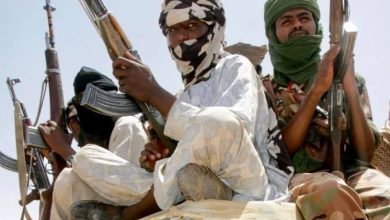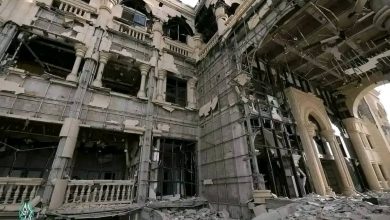Secrets and Revelations Unveiled for the First Time About the Liberation of Al-Jazirah

Sudan Events – Agencies
In the final days of March 2025, the Sudanese army succeeded in fully regaining control over Al-Jazirah State in central Sudan, after recapturing the headquarters of the 1st Infantry Brigade in Al-Baqir.
This full control came more than two months after the army entered the state’s capital, Wad Madani, on January 11, through a three-pronged military operation that encircled the Rapid Support Forces (RSF) in the state.
Operation Planning
Field commanders in the Sudanese army revealed to Al Jazeera Mubasher the details of planning the operation to regain control over Al-Jazirah. On January 8, the army and its allied forces launched a three-axis offensive on the RSF in the state, advancing from: Al-Managil (west), Al-Faw (east), and Sennar (south).
Major General Abdel Moneim Abdel Basit, commander of the Sennar axis, stated that planning to liberate Al-Jazirah began after the “enemy” entered Wad Madani and advanced further into the state in December 2023.
He added, “The resilience in Sennar and the liberation of Jabal Moya, Sinja, Al-Suki, and Al-Dinder in Sennar State broke the RSF’s effective power and led to their defeat in Madani and northern Al-Jazirah, along with the pivotal roles played by the Al-Faw and Al-Managil axes in the east and west.”
Abdel Basit disclosed that the Sudanese army had carried out “special operations” before the ground offensive against the RSF, aimed at depleting and exhausting their forces. He noted that the terrain in central and western Al-Jazirah favored the army.
He said, “The RSF’s strategy was to launch multiple offensives using considerable manpower and equipment, but most of its core forces were destroyed in Sennar after we shifted from defense to offense.”
Strategic and Critical Positions
As the military operation began, the army and allied forces quickly took control of strategic sites and key locations, enabling further advances across the state.
On January 9, the eastern axis unit “Al-Naba’ Al-Yaqin,” advancing from Wad Faqisha on the Gedaref–Wad Madani road, captured the town of Al-Shabarqa, previously held by RSF forces who had blocked the army’s expansion from Al-Faw.
Al-Shabarqa is located about 39 km east of Wad Madani. Its strategic value lies in its geographic links to dirt roads connecting to Al-Butana, eastern Al-Jazirah, and a paved road leading to the capital. It also allowed passage by boat across the Blue Nile to villages west of Wad Madani.
Al-Managil Axis Forces
Al-Managil axis forces conducted tactical operations and deep infiltrations into RSF-controlled areas over the past year. According to a field source in the western axis who spoke to Al Jazeera Mubasher anonymously, these operations fractured the RSF’s core strength.
The source said, “Special forces from the Al-Managil axis and local resistance units carried out ambushes and seized key locations in southern Al-Jazirah to prevent RSF westward advances, while drone strikes played a major role in the battle.”
He added, “These forces fought battles west of Wad Madani and liberated villages in the south in March 2024. This ongoing military pressure exhausted the RSF.”
Regarding the final plan for the Al-Managil axis, the source explained that the unit split into three military forces on January 8. The main force advanced toward Waraq Abu Sanina, 6 km west of Wad Madani. The other units moved south, north, and east to areas 10–13 km from the city, capturing strategic locations to block any RSF flanking attempts.
Sudan Shield Forces
In October 2024, Sudan Shield Forces commander Abu Aqla Kikel announced his defection from the RSF and alliance with the Sudanese army — a move considered pivotal in the Al-Jazirah campaign.
According to Sudan Shield’s Captain Hassan Jad Al-Sayed, the force launched several military operations in RSF-held territory, breaching their defenses in eastern Al-Jazirah.
On January 10, the army and Sudan Shield, advancing from Jibal Al-Ghur camp in Al-Butana, took control of Umm Qurra, east of Wad Madani, after battles that began on January 6.
Captain Hassan Al-Nazzawi told Al Jazeera Mubasher that Sudan Shield forces fought fierce battles in Umm Qurra, supported by air cover, then moved to Wad Al-Mahadi and launched a double-sided attack from the east and north, capturing it on January 11.
Captain Jad Al-Sayed revealed that Sudan Shield’s tactical and intelligence breakthroughs enabled Sudanese air forces to target the RSF’s last defenses, about 7 km east of Wad Madani.
Sudanese Army Strategy
General Abdel Basit said the Sudanese army’s strategy consisted of four phases:
1. Absorbing the initial shock.
2. Exhausting the enemy through prolonged engagement.
3. Systematically destroying the enemy’s forces.
4. Transitioning from defense to offense — the “bone-breaking” phase.
He noted, “The enemy suffered huge human and material losses in the Sennar axis. Its top commanders were killed, and thousands were wounded or captured.”
Liberation of Wad Madani
The battle to liberate Wad Madani occurred on January 11. A field source told Al Jazeera Mubasher that the city’s liberation was not initially scheduled for that date. The original plan aimed for securing surrounding areas first — like Al-Shabarqa and Al-Danaqla to the east and Waraq to the west — before advancing.
He added, “The Sennar axis, the largest force, was initially intended to take the city, but battlefield developments gave the eastern axis ‘Al-Naba’ Al-Yaqin’ an opening. The leading force under Major Bassam Othman (Abu Sattour) was the first to cross the Hantoub Bridge into Wad Madani, securing the area around the heart center west of the bridge.”
Major Bassam told Al Jazeera Mubasher: “Our force moved from Al-Shabarqa to Hantoub Bridge, engaged in heavy fighting with air and artillery support, and crossed the bridge on January 11 with three military vehicles. We secured all directions around it.”
He added, “Over 3,000 RSF fighters were killed in the Al-Jazirah battles, and several foreign mercenaries were captured — from South Sudan, Chad, Libya, and West Africa.”
According to Al Jazeera Mubasher sources, after that, Sudan Shield forces led by Abu Aqla Kikel crossed Hantoub Bridge and advanced via Nile Street to the 1st Division HQ and detention centers, working with special forces and intelligence units already inside the city. Al-Managil axis forces entered from the west via the Police Bridge, while the Sennar axis advanced from the south into the central market, engaging in street battles.
Supporting Factors
Field sources told Al Jazeera Mubasher that drone warfare played a decisive role in the battle. The Sudanese army received military support from allied nations and deployed strategic drones, including Turkish Bayraktar UAVs.
A field source said, “Advanced weapons, disrupted RSF communications, and RSF’s assumption that the army moved slowly all contributed to the army’s rapid gains. The RSF was caught off guard.”
According to Al Jazeera Mubasher, liberating Al-Jazirah was key to besieging RSF positions in Khartoum — a major step toward reclaiming the capital.



